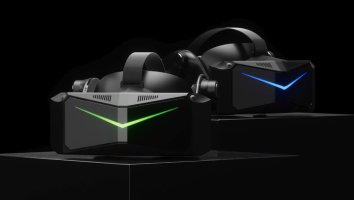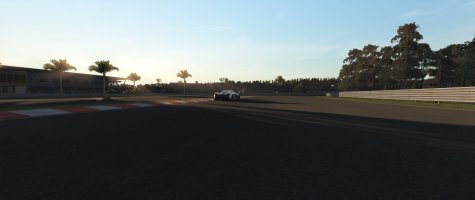Thanks again for the information. My computer ended up crashing in ACC after a couple laps of Spa. I changed the vcore to 1.33 and tried again. I was able to finish a 20 minute ACC race free of system crashes.
CPU-Z vcore is often accurate but sometimes not. The issue is that it fluctuates with the loadline calibration quite a lot. Short peaks of up to 1.4 volts aren't really an issue but the average vcore shouldn't exceed 1.35v.
I see you had 1.27v in your first screenshot and now set 1.33 in the bios and cpu-z now also shows 1.33.
5 GHz at 1.27v for an 8700k seems very low. Interesting that you could even do SOME laps!
Nice to hear that it's stable now!
I think I will start over with the overclocking settings. I am planning to reset my Bios and try your suggestions. Is there a nice overclocking guide you would recommend?
Hmm, you don't really need to reset your bios! But you can, ofc.
The issue with guides is that each motherboard has different names for the same things. Super annoying and the descriptions never tell you what's really what.
I personally would always keep all power saving features enabled and use adaptive vcore with a manual offset for the maximum power state.
In my Gigabyte z490 gaming-x, it's called "adaptive" and I then have the vcore set to "normal" but put in a -60 offset.
If you want: Do a video or take a lot of photos from your bios and throw them in a dropbox folder. I'll have a look at what to change to what. Your Z370 Aorus should have similar settings to my Gigabyte board!
Basically:
You have to try different settings and check in hwinfo64 what's happening...
I always use msi kombustor to simulate CPU loads. You can click on "CPU burner" and then select the amount of "Full Load threads" you wanna create.
Simracing titles can be simulated with 3 and 4 threads.
Here's a general z370 guided though, sadly for ASUS. Different names etc... But most things make sense when you compare it to your own bios!
One thing Gigabyte doesn't have, afaik:
"CPU Core Ratio: Sync All Cores". This can only be achieved via "MultiCore Enhancement", which sadly changes voltages, Powerlimits etc. on some Boards!
Some notes about the guide:
- Load line level 6 out of 7: It's "Turbo" at Gigabyte. Maximum settings always cause massive voltage spikes!
- Power Limits: keep them at default! Simracing doesn't use all cores so you won't run into any power limits anyway! Only when the game loads it might run into it. I personally have my 10600k limited to 90W. This throttles the CPU if a game loads using all cores or when I'm rendering stuff. I don't care about a few seconds longer wait time but this keeps the temperature spikes a LOT lower!!! I have my fans set up very silent and only ramping up and down slowly and steadily. If I unlock the power limits, my CPU will instantly run up to 100°c and throttle down. With the limit at 90W, my big fat air cooler can passively keep the temperature below 90°c until the fans spin up to then keep it at around 82°c.
- He uses a fixed vcore of 1.35v. As I said, I would recommend some variable settings with manual offset to save power in idle.
- High performance power plan in Windows: This keeps the CPU from clocking down in idle. I created a batch file that changes to high performance when I run it (double click) and keeps the cmd window open. When I hit any key in the cmd window, it will kill itself and set the power plan to "balanced".
Whenever I start gaming, I just execute the batch and when I'm done, I click into the open cmd window, hit a key and back to power saving

The little "downclocks in idle" can happen during simracing since not all cores are used. Sadly, these mini downclocks can cause little micro stutters! Not necessarily, but they can.
Why I need Multi Core Enhancement ON: When I manually put all turbo clocks to 49 and activate the high performance power plan, single cpu cores tend to clock down for short moments. With MCE active, all cores are synced so the single cores can't clock down anymore.
OC Guide starts at 5:00
And here's something about Skylake (6th gen) from the same der8auer guy. He's one of the best overclockers in the world and always gives reasonable and well known advice!
Sadly it's in German... The voltage image, which is the most useful in there, should be universal though and google translator should work well enough for the technical stuff!
Intel wird am 5.08.2015 gegen 14 Uhr deutscher Zeit die neuen Skylake Prozessoren präsentieren. Ich hatte schon vor einigen Wochen die Möglichkeit die CPUs ausgiebig zu testen und möchte euch hier eine kurze Anleitung zu Skylake Overclocking präsentieren. Einige Screenshots und Details fehlen...

extreme.pcgameshardware.de
Here's the voltage image implemented via link:
I also downloaded the hwinfo utility to aid in tracking system performance. Below is a link to a simple log file of my computer while I am writing this note.
Dropbox Link to HWiNFO log file
- Core VID: Interesting. As you can see, it's like I guessed: 1.41-1.44 avg!
- Core temperatures: did you run any sim while hwinfo64 was loggin? avg temp of 33°c doesn't look like you were. Sadly the maximum temperatures aren't in the chart or are they the values in "Core Max"? I'm not used to reading the CSV output
 - Voltages:
- Voltages:
- Vcore is in there, great. That's the important one. Check the min/max/avg. You can see if the loadline and the adaptive/variable offset works correctly. Mine shows min=0.684v / max=1.332v / avg=1.19v
- I would recommend to do the bios reset, load the XMP ram profile, then go into hwinfo64, put the kombustor cpu burner for 10 seconds to 2 threads, 4 threads, 6 threads, 10 threads, 12 threads to simulate different loads. Take a screenshot of all the other voltages (+3.3, 12v, vccssa etc).
Then activate multicore enhancements, put the multiplier to 50 and (if your bios is the same like mine) the vcore mode to adaptive, vcore normal and an offset at -0.1v (or 100, if it's in mV). This should drop the VID "auto" vcore to around 1.34v.
Loadline to Turbo.
Keeps the rest at "auto"!
Do the same load simulation via Kombustor and look at hwinfo64. Are the voltages all the same like without MCE? If yes, great. If not, put them manually to how they were before MCE!
- the "real" vcore some people talk about from the VRMs is "VR VOUT" in "HM" in the CSV file. As you can see, it's only 1.312v so a bit lower. Since you're stable at 5 GHz below 1.35v it's not interesting anyway though...
4000 CL19, nice!

Looks good!










